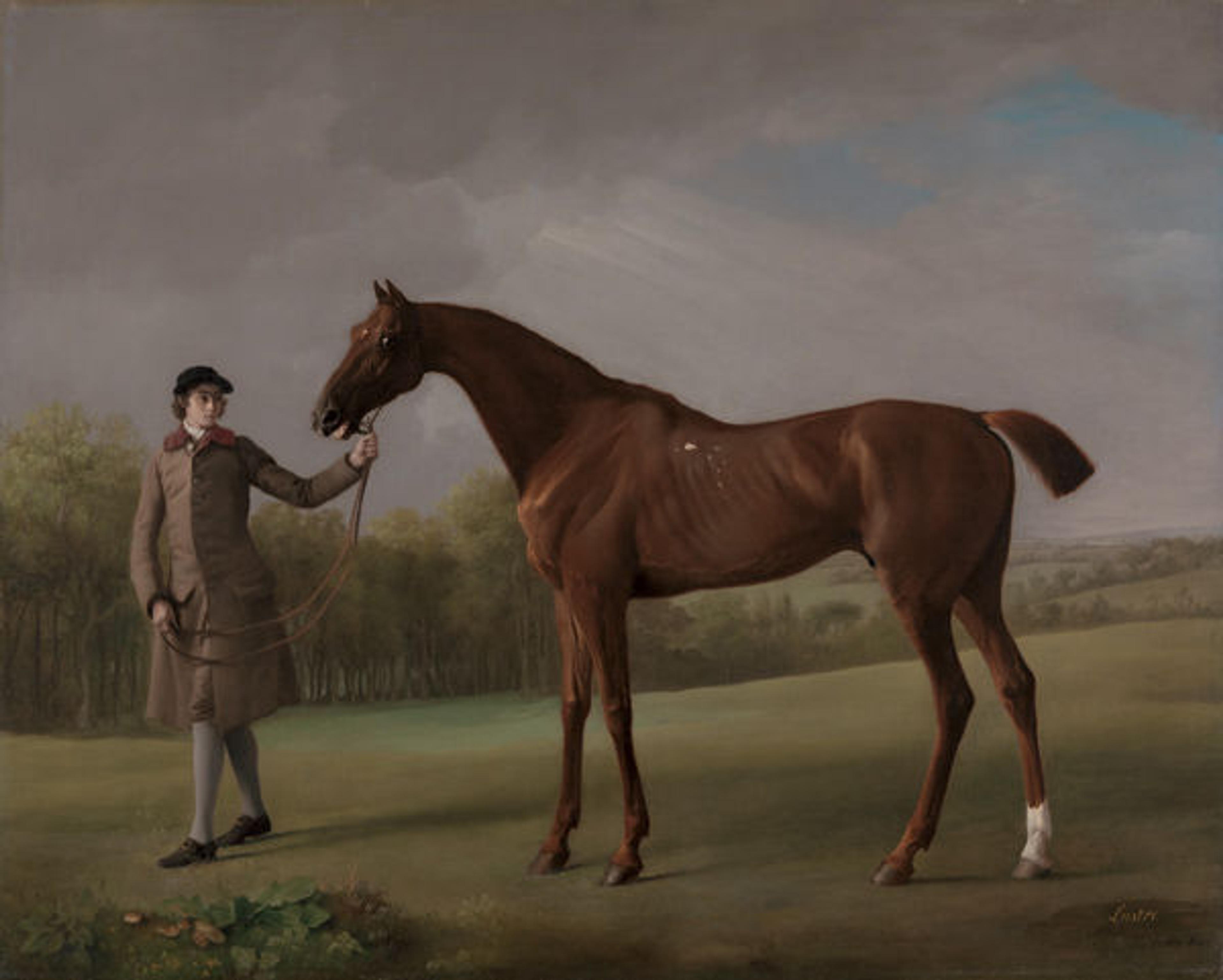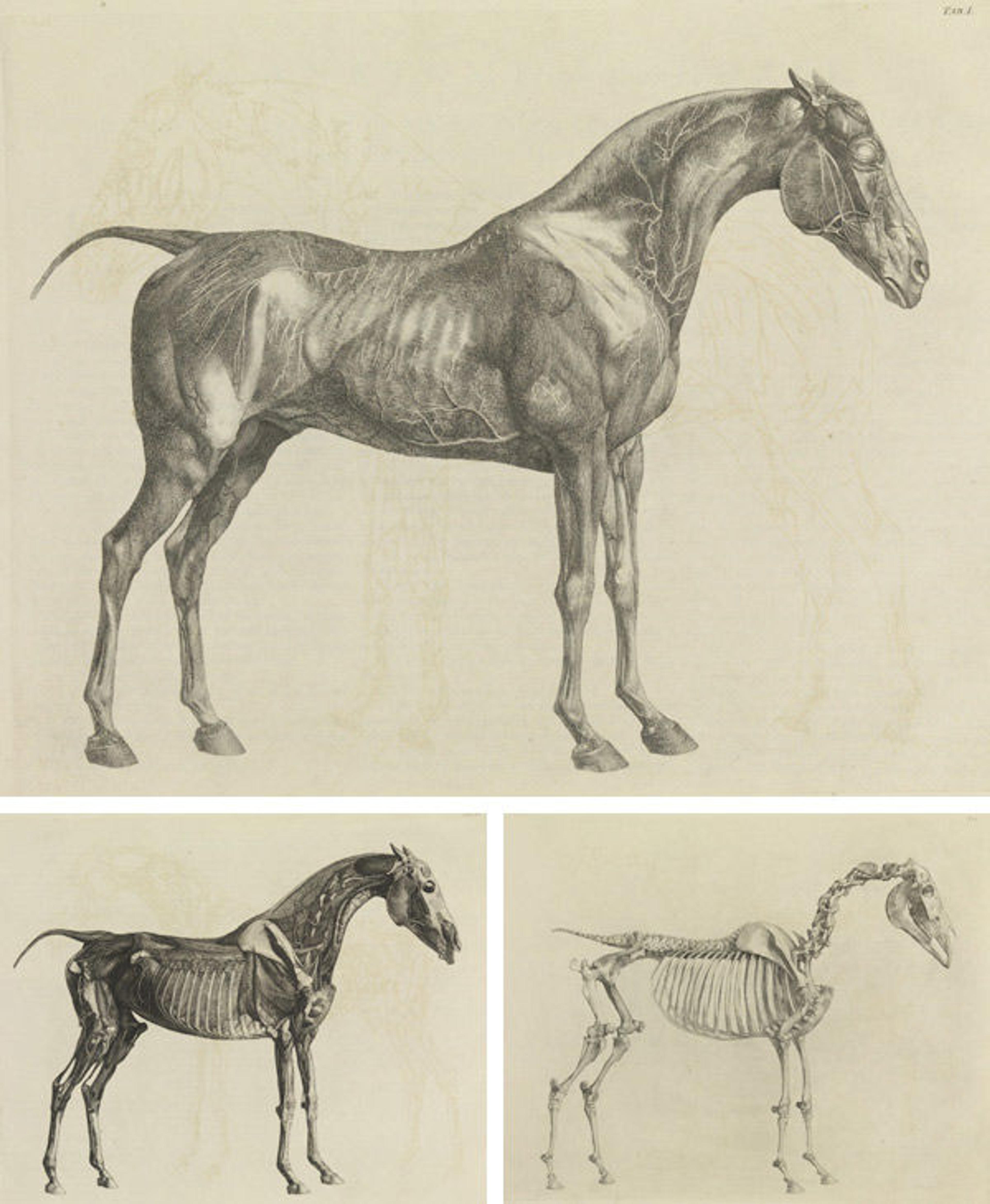
George Stubbs (British, 1724–1806). Lustre, Held by a Groom, ca. 1762. Oil on canvas; 40 1/8 in. x 50 in. (101.9 x 127 cm). Yale Center for British Art, Paul Mellon Collection
«British painter George Stubbs (1724–1806) created masterpieces of animal portraiture by combining anatomical exactitude with expressive details. One such portrait, Lustre, Held by a Groom, ca. 1762, is now on view in gallery 629 as part of the exhibition Paintings by George Stubbs from the Yale Center for British Art.»
Largely self-taught, Stubbs embarked in 1756 on a quest for greater realism in his work. Seeking to correlate the underlying anatomy of the horse with its outward appearance, he commenced a program of equine dissection. From the ceiling of a barn in the village of Horkstow, he hung a succession of horse carcasses and, over the course of eighteen months, peeled off layer after layer of equine tissue to reveal the morphology of the underlying parts. Sketching the animal at various analytical stages from three perspectives, Stubbs created a set of frontal, lateral, and posterior views that would become the basis of his book, The Anatomy of the Horse: including a particular description of the bones, cartilages, muscles, fascias, ligaments, nerves, arteries, veins, and glands. Illustrated with engravings by Stubbs that are memorable for their lifelike qualities, noble eloquence, and anatomical accuracy, the treatise was hailed as a groundbreaking work of artistic and scientific merit.

George Stubbs (British, 1724–1806). Three plates from The Anatomy of the Horse, 1766. Plates: etching; 18 1/4 x 23 in. (46.4 x 58.4 cm). The Metropolitan Museum of Art, New York, Gift of Lincoln Kirstein, 1953 (53.599.1bis)
Stubbs's masterpieces of animal portraiture have long been revered not only for their anatomical exactitude, but also for their portrayal of the unique living presence within each subject. Lustre, Held by a Groom is a noteworthy example. Foaled in 1754, Lustre was a chestnut colt descended directly from the Godolphin Arabian, whose bloodline ran through generations of the most decorated racehorses in England. Despite its impeccable lineage, Lustre won only two races for its owner, the Second Lord Bolingbroke, who may have commissioned this painting to facilitate the horse's sale.
Stubbs clearly based his portrait of Lustre on his drawings for The Anatomy of the Horse. He positioned his subject laterally to best display its musculoskeletal system, unique markings, and athletic build. Its poise and bearing imply a lifetime of training and socialization. Upon closer examination, one can see that Lustre's features are undergoing a transformation: its head is raised, ears are pricked, nostrils flared, mouth open, eye widened to the white. Blood courses through the veins of its legs, belly, and face as if, by instinct, it were preparing to take flight.
At a time when equestrian sports were thought to be ennobling, a spirited horse would have bestowed prestige on its owner in hunting, racing, warfare, and ceremonial activities. Revealing Lustre's inner spark as well as its outer splendor, Stubbs portrayed a mount that would have been sought after by the equestrians of the day.
Related Links
Paintings by George Stubbs from the Yale Center for British Art, on view April 6–November 8, 2015
Now at the Met: "George Stubbs and the Art of the Thoroughbred"
Bibliography
Egerton, Judy. George Stubbs, Painter: Catalogue Raisonné, 31–5, 154–5. New Haven: Yale University Press, 2007.
Stubbs, George. The Anatomy of the Horse, plates after Table of Contents, 8, 20. London, 1766.
"Equus, the Horse." In Encyclopaedia Britannica; or a Dictionary of Arts and Sciences . . . by a Society of Gentlemen in Scotland, vol. II, 506–511. Edinburgh: For A. Bell and C. Macfarquhar, 1771.